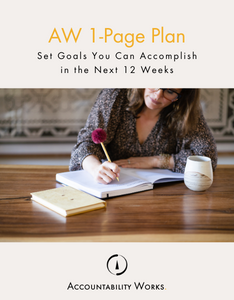
Productive meditation is not what you normally think of when you picture yourself meditating. During times of my life, I’ve found sitting meditation extremely difficult, so I’ve been known to do walking meditations, and this is even different from those. Productive meditation is where you take time out of your day and pair “a single well-defined professional problem,” with a physical activity. I learned the term from Cal Newport’s book Deep Work: Rules for Focused Success in a Distracted World. It could be walking, hiking, biking, running, or any activity where your body is active and your mind is free.
I started to do this when I would take my dog on walks in our neighborhood. At first, it was really hard to stay focused because my mind would wander. I’d forget what the problem was that I was trying to solve. However, over time, I got used to the rhythm of losing focus and then coming back to the problem. It’s very much like coming back to your breath in a seated meditation.
Productive Meditation versus Sitting at Your Desk
It helps me to quickly solve problems or reach a point of clarity in an area where I was previously stuck. Especially compared to trying to think it through at my desk. I wish I’d had this technique at my disposal when I was studying engineering and later physics. In those days, I would spend hours and hours on one homework assignment only to realize that I was completely off track. I can see that getting away and thinking through a problem in this way is much faster.
Productive Meditation and Attention Restoration
There is also something here that ties into last week’s blog on attention restoration. I do my productive meditation outdoors. When the mind wanders in nature, you experience soft fascination, replenishing your focus. Then going back to focusing on the problem. I wonder if that is why it is so effective. I will say I haven’t ended a walk yet without the answer I was looking for or with an idea worth pursuing.
Give it a try the next time you are stuck on something. I’ve practiced enough that when I get stuck, I’ll call my dog for a walk, and off we go. Not all walks are like this, of course. You won’t always need to solve a professional or personal problem. But it is a great tool when you hit a stuck point in preparing a talk, creating a course, writing an article, or submitting a proposal. It is also a great way to think through a difficult conversation or other personal situation where you’d like to have more clarity.



